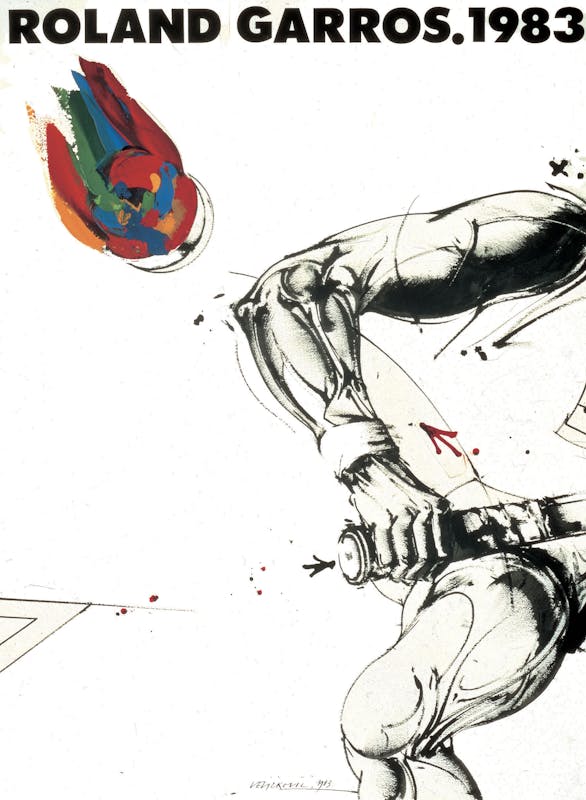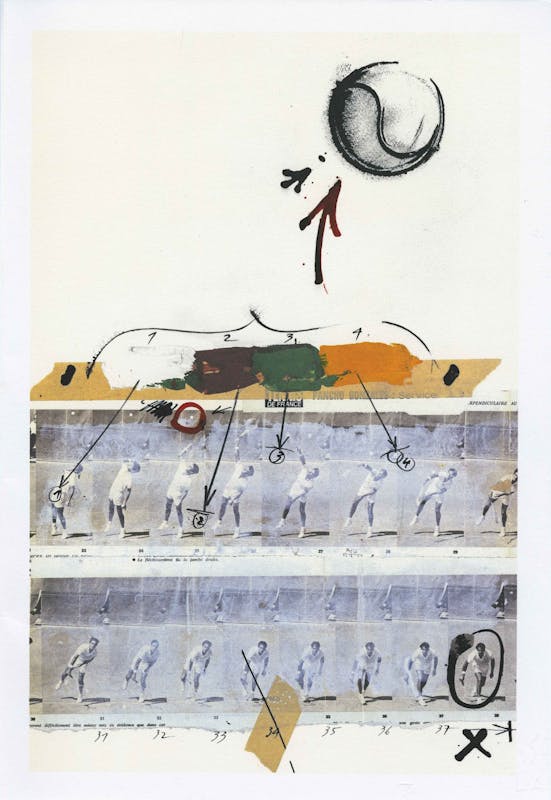The artist Vladimir Velickovic passed away on 29th August 2019. Thirty-six years ago, in 1983, he was chosen by the French Tennis Federation to create the official Roland Garros tournament poster. We take a look back at the life of this leading artist from the Narrative Figuration movement.
Vladimir Velickovic, a key artist from the movement
The artist Vladimir Velickovic passed away on 29th August 2019. In 1983, he was chosen to create the official Roland Garros poster.

Roland Garros 1983. The 20,000 spectators on Centre Court were in raptures: Yannick Noah had won the final against Mats Wilander. The French player had enjoyed an almost flawless run through the fortnight, having only dropped one set.
The 23-year-old was simply astounding: athletic body, rippling muscles and a powerful hit that gave his opponents very little breathing space. His physique was not unlike the figure depicted in the new tournament poster. Had the artist used Noah as a muse?

Discovering the motion photography
Vladimir Velickovic was the fourth artist the FFT had asked to create the tournament poster. Following on from Valerio Adami, Eduardo Arroyo and French artist Jean-Michel Folon, they decided upon this Belgrade-born artist, who had been awarded a prize at the Biennale de Paris in 1965 and had just been appointed professor at the Ecole Nationale Supérieure des Beaux-Arts in Paris.
An architecture graduate, painter and sculptor, Velickovic came to France in the early 1970s. Here, he developed his own drawing and painting style, though he had a preference for drawing.
At the same time, he discovered the work of motion photographer Eadweard Muybridge, a pioneer in chronophotography like France’s Etienne-Jules Marey. It was on the actual Roland Garros site that he studied the running style of humans and animals. This revelation led him to adopt a different approach for depicting movement.

Movement and Indian ink
It was perfectly natural that his work for the 1983 Roland Garros poster should involve the way that a player moves. His many preparatory sketches are proof of this: helped by the “Technicorama” created by photographer and former player Gil de Kermadec, he dissected a player’s movement and reproduced it using Indian ink.
“My personal journey showed me that colour dials down an image’s power,” he said. The result was a powerful piece, though a lot less tragic than his other paintings.
The FFT owns the original 1983 poster, as well as the numerous preparatory sketches drawn by the artist.
 ROLAND-GARROS
18 May - 7 June 2026
ROLAND-GARROS
18 May - 7 June 2026

